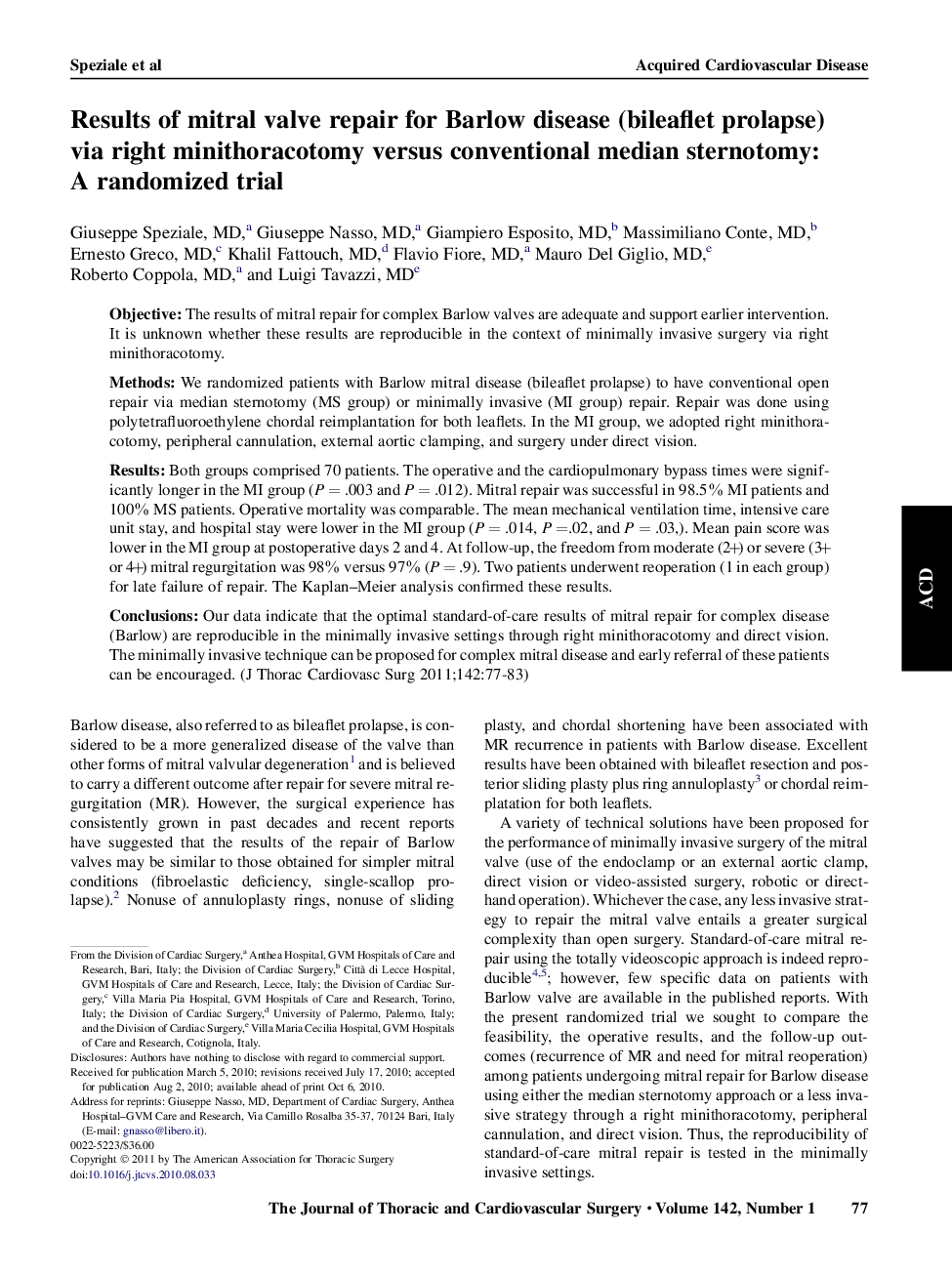| Article ID | Journal | Published Year | Pages | File Type |
|---|---|---|---|---|
| 2982501 | The Journal of Thoracic and Cardiovascular Surgery | 2011 | 7 Pages |
ObjectiveThe results of mitral repair for complex Barlow valves are adequate and support earlier intervention. It is unknown whether these results are reproducible in the context of minimally invasive surgery via right minithoracotomy.MethodsWe randomized patients with Barlow mitral disease (bileaflet prolapse) to have conventional open repair via median sternotomy (MS group) or minimally invasive (MI group) repair. Repair was done using polytetrafluoroethylene chordal reimplantation for both leaflets. In the MI group, we adopted right minithoracotomy, peripheral cannulation, external aortic clamping, and surgery under direct vision.ResultsBoth groups comprised 70 patients. The operative and the cardiopulmonary bypass times were significantly longer in the MI group (P = .003 and P = .012). Mitral repair was successful in 98.5% MI patients and 100% MS patients. Operative mortality was comparable. The mean mechanical ventilation time, intensive care unit stay, and hospital stay were lower in the MI group (P = .014, P =.02, and P = .03,). Mean pain score was lower in the MI group at postoperative days 2 and 4. At follow-up, the freedom from moderate (2+) or severe (3+ or 4+) mitral regurgitation was 98% versus 97% (P = .9). Two patients underwent reoperation (1 in each group) for late failure of repair. The Kaplan–Meier analysis confirmed these results.ConclusionsOur data indicate that the optimal standard-of-care results of mitral repair for complex disease (Barlow) are reproducible in the minimally invasive settings through right minithoracotomy and direct vision. The minimally invasive technique can be proposed for complex mitral disease and early referral of these patients can be encouraged.
